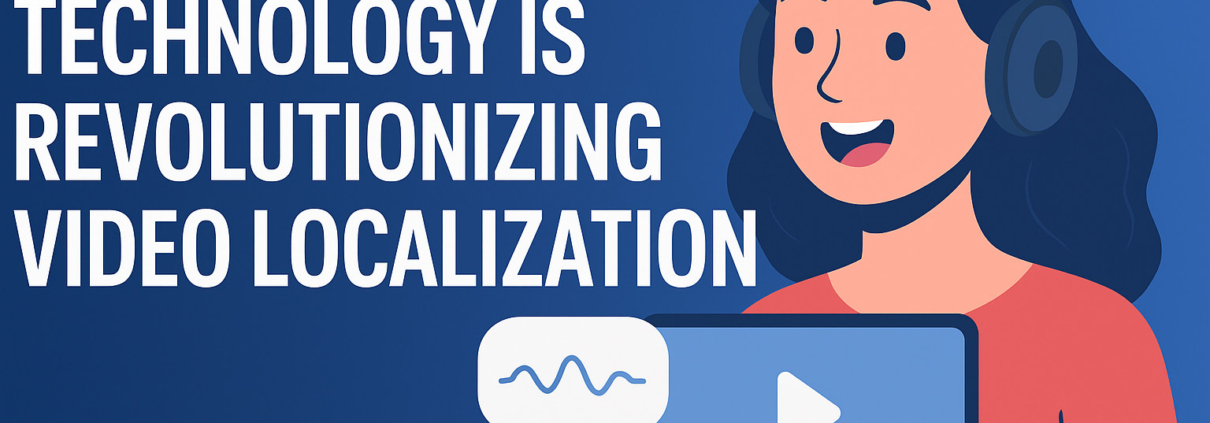How AI Lip Sync Technology is Revolutionizing Video Localization
In today’s interconnected world, video content crosses borders more than ever. Whether it’s movies, advertisements, educational videos, or corporate training materials, reaching a global audience requires adapting videos to different languages and cultures. This process, called video localization, involves much more than just translation; it demands that dialogue, lip movements, and visual cues align seamlessly in the target language. Traditional localization methods are costly, time-consuming, and often result in awkward mismatches between audio and visual lip movements.
Enter AI lip sync technology—a groundbreaking innovation that is revolutionizing video localization by automating and significantly improving the synchronization of lip movements with translated speech. In this blog, we will explore how AI lip sync works, why it’s a game changer for localization, and what benefits it brings to creators, marketers, and viewers worldwide.
What is AI lip sync technology?
AI lip sync technology uses advanced machine learning algorithms, especially deep neural networks and computer vision, to analyze video footage and digitally recreate lip movements that precisely match new audio tracks in different languages. Unlike traditional dubbing, which simply overlays new voice tracks without adjusting the visual lip movement, AI lip sync video alters facial animations automatically so that the lips appear to “speak” the translated dialogue naturally.
The process typically involves multiple steps:
- Speech recognition and text conversion of the original dialog.
- Translation and conversion of translated text to speech audio.
- Analysis of the original video’s lip movements and facial expressions.
- Generation of new facial and lip movements that align with the translated audio using AI models.
- Optional refinement steps to maintain natural expressions and mouth shapes.
Why Traditional Localization Falls Short
Traditional video localization often involves manually re-recording voiceover audio in the target language, but the original mouth movements remain unchanged, which causes a disconnect. This lip-sync mismatch can be distracting and reduce the viewer’s immersion and emotional connection with the content. Manually adjusting videos frame-by-frame to fix sync issues is expensive and impractical at scale.
Subtitles and captions are an alternative, but many viewers prefer dubbed or lip-synced content for ease and better engagement. This creates a huge demand for more natural and efficient lip sync solutions, especially as video content volume multiplies across social media, e-learning, gaming, and entertainment.
How AI Lip Sync Revolutionizes Localization
AI lip sync technology changes the localization landscape by automating and enhancing the entire dubbing and adaptation process:
- Speed and Scalability: AI can generate perfectly synced lip movements in minutes instead of days, enabling creators to produce localized versions quickly and respond to market demands faster.
- Cost Efficiency: Automating lip sync reduces the need for costly manual animation, voiceover sessions, and editing, making localization accessible to smaller studios and independent creators as well as large enterprises.
- Natural and Realistic: Deep learning models trained on vast video and speech datasets capture subtle phoneme-mouth shape relationships, emotions, and expressions, resulting in much more convincing and believable dubbing.
- Multilingual Support: AI models can handle multiple languages and accents, allowing content to be localized into diverse markets without extensive reshoots.
- Consistency Across Formats: Whether it’s 2D animation, 3D characters, or real human faces, AI lip sync adapts to different styles while preserving the original artistic vision.
Key Applications of AI Lip Sync in Video Localization
- Entertainment Industry: Films, TV shows, and animated series can be localized more efficiently for international distribution, preserving actors’ expressions and emotional performances.
- Marketing and Advertising: Brands can craft hyper-targeted campaigns with localized videos that speak directly to regional audiences, increasing engagement and conversions.
- Education and E-Learning: Training videos and courses can be translated and lip synced to support global learners, enhancing comprehension and accessibility.
- Gaming and VR: AI lip sync helps create immersive multilingual gaming experiences where NPCs and avatars speak naturally in different languages.
- Corporate Training: Multinational companies can localize compliance, onboarding, and training videos consistently to reach employees worldwide.
Benefits to Viewers and Content Creators
For viewers, AI lip-synced localized videos feel natural, immersive, and emotionally authentic. The seamless synchronization of speech and facial movements reduces distractions and helps audiences connect deeply with the content. This improves retention, satisfaction, and brand loyalty.
Creators and marketers benefit from faster time-to-market and reduced localization expenses. They can enter new markets confidently and keep their video content fresh, relevant, and culturally appropriate. The ability to easily create multiple localized versions also drives better monetization and broader reach.
Challenges and Future Directions
While AI lip sync technology is advancing rapidly, some challenges remain. Handling complex facial nuances, regional dialects, and emotional intensity perfectly requires ongoing AI improvements. Some content types, such as live-action footage with fast camera movements, can present technical hurdles.
Ethical considerations around deepfake-like capabilities also require responsible use to avoid misinformation and misuse. Despite these challenges, the future of AI-powered lip sync looks promising, with continuous research improving quality, speed, and creative control.
Conclusion
AI lip sync technology is reshaping the world of video localization, transforming a traditionally complex, expensive process into an efficient, scalable, and natural experience. It empowers creators and businesses to break language barriers, localize authentically, and engage global audiences like never before.
As AI continues to evolve, the possibilities for creative storytelling and communication across cultures will only expand, making AI lip sync an indispensable tool in global video production and marketing strategies.
With AI lip sync technology, the future of video localization has truly arrived—where every language can sound and look perfectly connected on screen.



Leave a Reply
Want to join the discussion?Feel free to contribute!